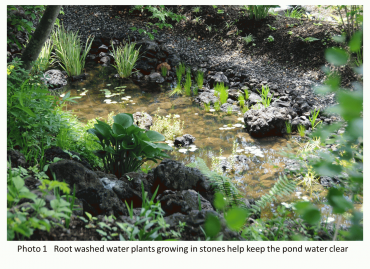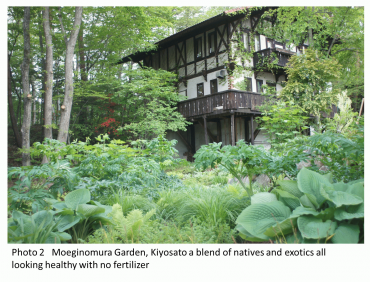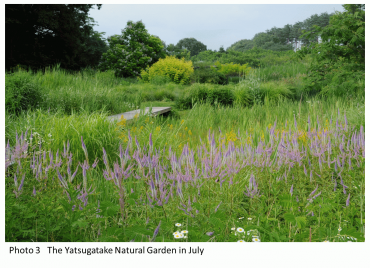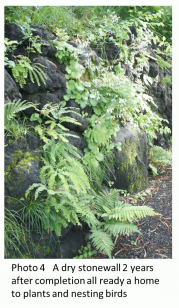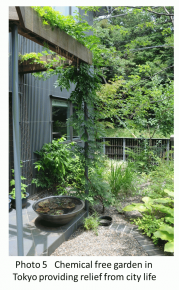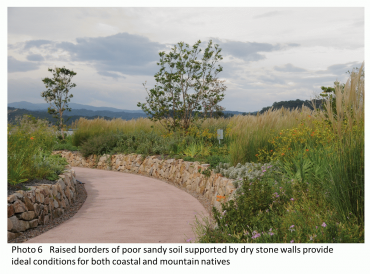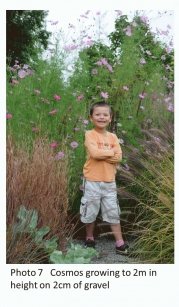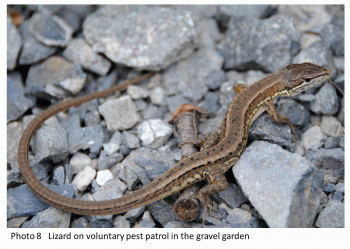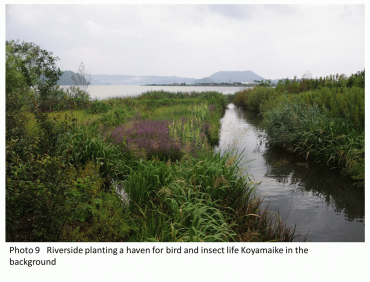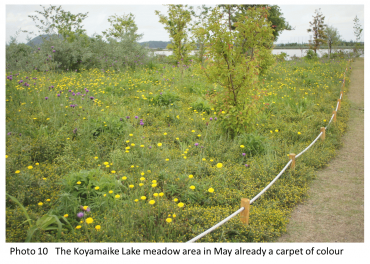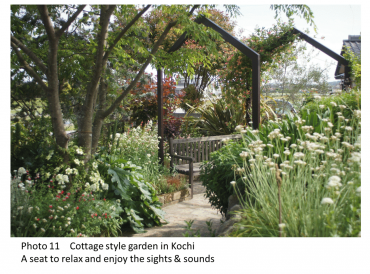Natural Gardens - where ecosystems are born -
- Paul Smither
- Garden Designer, Horticulturist
In the mid 1980’s while my parents were busy trying to turn their newly acquired cave like semi-detached house into a more livable space, I was handed a book and told to sort the garden out. The book was How to Make a Wildlife Garden by Chris Baines and upon reading it I was immediately hooked and raring to go. By digging a pond, planting predominantly native trees and shrubs and allowing previously manicured lawns to grow, a series of small but interlinked habitats could be created encouraging a wide range of fauna and flora into the relatively small confines of a modern day garden plot.
After hand digging a pond in heavy clay my father and I were in need of encouragement and it duly arrived in the form of a great diving beetle arriving by air just 20minuites after completion. Visitors came thick and fast and by the following spring we were also proud landlords to a colony of common newts, toads and frogs. Frogs in particular were welcome because they had disappeared from much of the surrounding countryside due to urban sprawl and more intensive farming techniques.
The small spring meadow running along the margin of the pond became a refuge for Cowslip (Primula veris) and Lady’s Smock (Cardamine pratensis) the latter propagated from leaf cuttings taken from a plant growing in the lawn of a Victorian house due for re-development.
The newly planted mixed species hedge soon provided food and shelter for birds, insects and the dappled shade, a prefect environment for woodland plants.
The addition of a nest box attached to an elderly apple tree provided accommodation to a breeding pair of blue tits who in turn dutifully stripped the tree of various leaf-munching caterpillars.
Finally a more conventional style planting of herbaceous plants and flowering shrubs chosen for their attractiveness to nectar seeking insects was positioned near the house ensuring that not only was the garden a pleasure to all the senses but was also making a positive impact on the local environment.
The making of this garden also coincided with the beginning of my formal horticultural education. Practical experience was gained by working alongside skilled horticultural staff by day and studying horticultural theory in the evenings on subjects such as fertilizer application and the correct use of pesticides. Apart from inducing almost simultaneous sleep I found much of this lesson time most confusing, because I did not have any pest or disease problems that warranted getting dressed up in all the spraying paraphernalia. As for fertilizer when creating a meadow in my own garden the instructions were specific – no fertilizer should be applied and when choosing a site the poorest possible soil will help to reduce the competition from more vigorous growers, allowing a wider range of plants to thrive. To further reduce soil fertility the subsequent hay clippings were to be removed and composted elsewhere to prevent nutrients returning to the soil.
After a while I reconciled these two different approaches to plant cultivation by assuming that the use of predominantly exotic plants in conventional gardens meant that you had to use chemically assisted cultivation methods because exotic plants were not as adapted to British growing conditions as native plants were.
Looking back now even a cursory look at a neglected super market landscape would have blown a Berberis sized hole in this assumption but at the time a garden to attract wildlife was usually made in on out of the way corner of a conventional garden.
On arriving in Japan twenty odd years ago the penny finally dropped after stumbling quite literally into an alpine meadow in Nagano-ken where I was faced with a mass of wild Hemerocallis, Veronicastrum, Rhododendron, Filipendulas and Hostas. These were all plants that I had been taught to fertilize while studying in England. Yet deep in the mountains and with no human intervention all these plants were looking most healthy. Exotic plants were after all some body else’s native plants.
Since then I have found that positioning a plant in a place it is adapted to is the most important factor in deciding whether it will thrive or not. Subsequent division of perennials to encourage new growth and in the case of woody plants the correct pruning of limbs to encourage re juvination are all that is needed to maintain vigour in plants.
A mulch of leaf mould or composted bark will help plants retain moisture, suppress unwanted plants and encourage the soil enhancing actions of bacteria and worms.
Yatsugatake Natural Garden
Shortly after setting up my business I was commissioned to design and build a small garden alongside a house in Yamanashi-ken. The site was steeply sloping and so in order to level the ground and make planting possible, a series of terraces supported by dry stonewalls of local field stone were constructed.
The plantings were very mixed and plants were chosen to provide interest throughout the year in an area where winters tend to be long and cold. Some of the plants were Japanese natives, particularly in the out lying areas of the garden but many were non natives chosen for their ease of cultivation and suitability to the conditions on site.
The very light sandy soil was improved by the addition of a generous amount of leaf mould before planting and a mulching shortly after planting; but no fertilizer was used. All plants received a thorough watering.
The original planting was carried out just before the rainy season and after a full month of ample rain grew exceedingly well.
In fact, a small group of Common Sage (Salvia officinalis) grew so well in there first year that there were enough leaves for a good harvest. These plants, perhaps due to there soft lush growth did not successfully over winter, but several plants deliberately planted in the hardcore of the gravel finished steps survived for a further seven odd years, further cementing my view that plants are often better off with fewer nutrients than is commonly thought.
Over the years the garden was extended until it bordered three fallow rice fields. I expressed an interest in cultivating one of these fields but before I could re consider I was asked to look after all three, with this offer accepted I do not think I have ever seen an elderly woman retreat so quickly.
It soon became obvious that I had bitten off too much at time when work was becoming busy. So I had to streamline my cultivation techniques further to minimize time-consuming maintenance such as weeding.
So very early on two of the fields were covered with mulching sheets and plants were planted through slits made in the sheet. The soil was improved with leaf-mould and the sheet was covered with gravel. The main reason for the gravel covering was to hide and protect the sheet but also to promote the self-seeding of hardy annuals to soften the planting. The planting was in the prairie style made popular in North America with a generous mix of North American and Japanese natives quite widely spaced in some areas so that there individual forms could be appreciated. The 2cm thick gravel mulch was a big hit with Cosmos bipinnatus, which grew and flowered on just this gravel alone to the lofty height of 2 meters.
The gravel spaces between the plants made ideal hunting grounds for many lizards who’s motto seemed to be if it moves eat it. The path through this garden was made by regular mowing of an uncovered section of ground between the plantings until the natural weed growth turned through natural selection over a period of three years into a healthy green sward of grasses, sedges and low spreading perennials suitable to the cutting regime and soil conditions.
The remaining uncovered field was very boggy and often swallowed the farmers tractor, so instead of a conventional garden planting which would have called for some drainage work a series of ponds were excavated and all the top soil relocated to form a long bank alongside the road to provide privacy from the road and bring down the fertility of the remaining land. This area of exposed poor sub-soil was then planted with damp, sun loving wild flowers many of which were relocated from other fields due for drainage work.
A raised wooden walk way was the installed to make the garden accessible without damaging the plants below. The garden is now a mass of wild flowers and grasses literally humming with life including an extremely healthy population of pond creatures and all the other life they in turn attract. The fireflies that light up the humid nights in the rainy season are a particular favorite of visitors to the garden.
This whole area is maintained by simply cutting and removing all spent herbaceous growth in the autumn and removal of over zealous growth of water plants to ensure some areas of open water in the ponds.
My experiences and experiments in this garden have given me the confidence to design gardens using the same principles and techniques all over Japan.
Recent projects include the main garden for the 2013 Zenkoku Toshi Ryokka Fair in Tottori where a large park containing predominantly plants native to the Tottori region has been constructed using local materials. As the site straddles a section of the huge Koyama Lake it has been more important than ever to make sure the garden is cultivated without the use of fertilizers and pesticides to prevent harmful run off into the lake
In this garden raised borders of perennials, bulbs, trees and shrubs can be enjoyed while walking along paths with dramatic views of the water and surrounding mountains.
Meadow areas have been made with plants for further expansion in the pipeline.
In the summer the bird and insect life is astounding, my only concern being the tendency for the buzzards to occasionally drop their fishy catch from a great height. That aside, I hope by building these gardens I can show those decision makers above that parks and gardens need not be monotonous life less places full of somber evergreen shrubs pruned and sprayed to with in an inch of there lives!
Profile of Paul Smither
Mr. Paul Smither was born in Berkshire, the United Kingdom. He learnt horticulture and garden designing at Wisley Garden of the Royal Horticultural Society (UK) and the Longwood Gardens (USA).
Since the establishment of the Garden Rooms in Mitaka City, Tokyo, Japan in 1997, Mr. Smither has designed and constructed gardens at private houses, commercial facilities, and public spaces. Also, he serves as garden designer, consultant and lecturer.
In 2000, he won the RHS Premier Award (Presentation Garden, the 1st Gardening Show, Tokyo).
In 2003, he designed an English style natural garden, “Seasons,” in Takarazuka Garden Fields in Hyogo Prefecture, Japan. He implemented a chemical-free method in the city garden and suggested an environmentally-conscious natural gardening.
In 2004, “Natural Garden Senryu” was founded in Mitsuke City, Niigata Prefecture, Japan. This park designed based on a breakthrough idea provides spaces where people of all generations can share good times in a natural setting.
The “Picturesque Garden” designed by Mr. Smither in 2009 was opened in Karuizawa Picture Book Museum, Nagano Prefecture, Japan in 2010.
In 2013, he designed and audited the Koyamaike Natural Garden, the main garden of the 30th National Urban Greening Fair in Tottori which was held in autumn 2013.
He has been engaged in gardening at Moeginomura Garden, Kiyosato, Yamanashi Prefecture since 2012. His gardening method living in harmony with nature of Yatsugatake attracts increasing attention.
Mr. Smither, a garden designer working in Japan with a love for Japan’s plants and nature, is now a driving force for making a new natural gardening style through advocating a garden style where humans and nature can interact. Especially, his method of using native grasses including Japanese silver grass and plantain lily is highly evaluated. Also, he has made biodiverse environments through carrying out a chemical-free method. He has created original spaces by using plants and materials indigenous to the respective regions.
Mr. Smither’s major books include: Paul Smither no Shizen-ryu Niwazukuri (in Japanese, Paul Smither’s Natural Gardening), Paul Smither no Osusume no Hana Guide (in Japanese, Paul Smither’s Flower Guide, Kodansha Ltd.), Paul Smither no Natural garden (in Japanese, Paul Smither’s Natural Gardening), Machi no Nakani Shiki wo Tsukuru (in Japanese, Making Seasons in the City), Hikage de Yokatta! (in Japanese, A Shady Area is A Good Area), Paul Smither no Garden Kouza, Erabu Koto Kara Ueru Made (in Japanese, Paul Smither’s Gardening Lecture from Choosing to Planting, Takarajimasya Inc.), Organic de Kokomade Dekiru! (in Japanese, We Can Do by Organic, Hankyu Communications Co., Ltd.), Natural na Niwazukuri (in Japanese, Natural Gardening, Shufunotomo Co., Ltd.), and Natural Garden wo Tsukuro! Jimoto no Sozai de Utsukushii Fukei wo (in Japanese, Let’s Make a Beautiful Natural Garden Using Regional Materials). He also published a series of DVDs entitled “Shiki no Garden Seikatsu, Paul Ryu Engei Technique (in Japanese, Four Seasons’Gerden Life – Paul Style Gardening Technique), 4-volume, BS Fuji.
Garden Rooms http://www.gardenrooms.jp/







